Nitrogen Dioxide Sterilization Supports Innovation in Medical Device Market
 Evan Goulet, PhD Director, Sterilization Operations
Evan Goulet, PhD Director, Sterilization Operations
Like many industries, the medical device industry is innovating to meet the requirements of a changing world. Driven by the need to improve patient safety, reduce production costs and optimize efficiency, ultimately reducing health care costs — new drugs, technologies, materials and processes are continuously being introduced. Additionally, new device designs, such as dual-chamber prefilled syringes and drug-device combination products, seek to increase functionality while simplifying procedures for medical professionals. This is driven by both quality and cost factors; including greater fill and dosing accuracy and higher degrees of safety.
A greater proportion of the new therapeutic agents being developed are bio pharmaceuticals, which impose new challenges on manufacturing and packaging. Biologically-derived molecules are often heat labile and have different physical properties compared to their less complex chemical pharmaceutical counterparts. Other examples of the growing complexity of bio-pharmaceuticals and medical devices include drug-device combination products and customized implant products, each of which have different characteristics and create manufacturing and processing challenges. With the design and development of innovative devices and packaging, the challenge of successfully and efficiently sterilizing them can be a barrier to market entry. These challenges are forcing reconsideration of sterilization methods.
Traditional Sterilization Methods Available for Manufacturers:
Steam
Despite high energy usage, steam sterilization remains a simple and cost-effective method for materials that can withstand the temperature and pressure conditions. Steam/air autoclaves may be used in-house for a variety of medical and drug delivery devices such as contact lenses and packaged prefilled syringes (heat-stable products). It is also non-toxic and leaves no residues.
Ethylene Oxide
Despite acknowledged pitfalls, EO remains the most widely-used method of sterilization for medical devices. It is compatible with a broad variety of materials (indeed, manufacturers of polymers have historically screened their materials for traditional sterilization methods, so this broad compatibility is not surprising).
For drug-device combination products, there are concerns around toxic residuals, a relatively high temperature/humidity process, and long “turnaround” time (sometimes >20 days, including transportation). The main drawbacks to bringing EO sterilization in house are the carcinogenic and flammable nature of the gas.
Irradiation
Electromagnetic radiation at various energies may be used to kill microorganisms. The most common is Gamma radiation, which is produced by naturally occurring isotopes such as Cobalt-60. Drawbacks include the fact that there is no “off” switch – the source must be shielded at all times. This often requires housing in a dedicated facility with thick concrete walls and a labyrinth tunnel through which product must pass for exposure to the radiation, which is highly penetrating and renders the contents sterile. It is compatible with a range of materials, although the radiation causes degradation (cross-linking) of some polymers and may change the chemical structure of active pharmaceutical ingredients. On the plus side, there are no residuals and the process operates at room temperature.
Lower energy radiation, E-Beam, is used to a lesser extent as it has lower penetration capability. As a benefit, E-Beam may be switched off when not needed, but as the process creates X-rays, significant shielding and a labyrinth are still required.
Nitrogen Dioxide sterilization provides an option to effectively and efficiently sterilize complex materials and drug-device combination products.
Nitrogen Dioxide (NO2) gas is a chemical sterilant that provides device manufacturers with a rapid and effective sterilization option. Most importantly, the NO2 sterilization process is carried out at room temperature and requires minimal vacuum, making it an attractive candidate for temperature-labile and pressure sensitive products.
One such class of products encompasses bio-pharmaceuticals in prefilled syringes that are intended for use in ophthalmic or surgical applications. There is growing pressure from regulators and health care professionals for manufacturers to provide sterile external surfaces on these prefilled syringes. Noxilizer’s NO2 gas process is capable of sterilizing the exterior of prefilled syringes at room temperature and near ambient pressure without adversely affecting the contents of the syringes.
The NO2 sterilization process is typically less than 3 hours in duration; including the aeration phase. Vacuum can be used to provide a faster cycle for devices that can withstand pressure changes, but the NO2 gas readily diffuses in and out of packaging when minimal vacuum (700 mm Hg) is used to exchange process gases in the chamber. As with all methods, there are a few material compatibility issues, but these may generally be overcome by selection of compatible materials during product development.
NO2 gas is non-carcinogenic and non-flammable, both of which make it practicable for manufacturers to bring sterilization operations in house. The Noxilizer RTS 360™ Industrial NO2 Sterilizer is designed to support lean manufacturing processes, and may be placed in line with assembly and packaging operations. NO2 gas is efficiently scrubbed from the exhaust via an on-board abator system. For manufacturers that do not wish to bring sterilization in house, it can be contracted through Noxilizer, Inc.’s ISO 13485-certified facility for quick turnaround.
Conclusion
The growing proportion of bio-pharmaceuticals, coupled with increasingly complex drug delivery devices, presents challenges in the selection of an appropriate sterilization process.
Additionally, efforts at cost reduction and market responsiveness are driving shorter sterilization turnaround time/time-to-market, presenting additional challenges to device designers.
Traditional sterilization methods (Steam, EO, and Gamma) continue to serve the industry; however, manufacturers with sensitive products and interest in greater efficiency now have another sterilization option. Nitrogen Dioxide delivers safe, room-temperature sterilization with a range of material compatibility and low levels of residuals using a rapid and efficient process.
